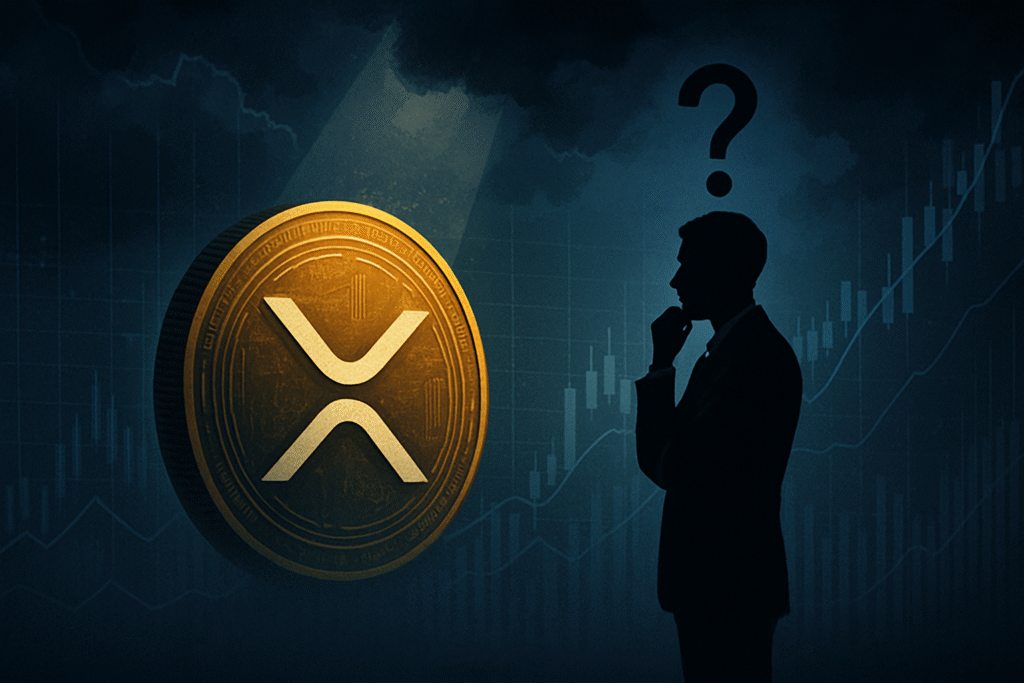In the ever-evolving world of cryptocurrency, debates often spark around the practical applications and intrinsic value of digital assets. Recently, a notable discussion has emerged within the crypto community, challenging the real-world utility of XRP and the relevance of its underlying technology, the XRP Ledger. This dialogue gains significance as a newly launched spot ETF achieved remarkable success, setting a benchmark for other funds this year. The debate underscores the growing curiosity and skepticism among investors and experts alike regarding the tangible benefits and economic rationale of holding such digital tokens.
Rethinking XRP’s Market Utility: Expert Interactions and Insights
Renewed Focus on XRP’s Purpose and Value
The conversation was reignited by Matthew Sigel, the head of digital assets research at VanEck, who questioned XRP’s functionality and value proposition through a series of direct and provocative social media posts. Addressing the passionate community of XRP supporters, Sigel expressed his skepticism with a mix of sarcasm and inquiry, setting the stage for a deeper examination of the token’s practical use and developer interest.
Sigel’s probing continued as he challenged the community to provide evidence of genuine developer activity and interest in building applications on the XRP Ledger. His posts highlighted the importance of developer traction and on-chain activity as indicators of a network’s value, pressing the need for demonstrable use cases.
Debating Economic Benefits to Token Holders
An interesting twist occurred when an XRP supporter referenced Ondo Finance’s launch of its OUSG tokenized Treasury fund on the XRP Ledger as a sign of the ecosystem’s vitality. Sigel critically examined whether such initiatives translate into concrete economic benefits for XRP holders, questioning the existence of mechanisms like fee capture, revenue sharing, or any economic linkage that would enhance the token’s intrinsic value.
The conversation further touched upon XRP’s association with wealth creation and controversial campaigns. In a notable exchange, Sigel referred to a Ripple co-founder’s financial backing of Greenpeace’s anti-proof-of-work campaign, highlighting the complexities surrounding institutional narratives and their wider implications in the crypto world.
Contrasting Perspectives: Institutional Adoption and Market Dynamics
As the debate progressed, it also involved comparisons between XRP and other digital currencies like Bitcoin. Sigel emphasized the growing institutional interest and governmental support for Bitcoin, contrasting it with XRP’s perceived speculative nature. He mentioned how prominent investors and state entities are actively engaging with Bitcoin, further differentiating it from XRP’s market positioning.
Notably, Solana Foundation’s Vibhu Norby contributed to the discourse by offering a nuanced view of XRP as a store-of-value (SoV) asset similar to Bitcoin, but with varied transactional usage. Norby acknowledged Ripple’s effective management, while questioning the transactional relevance of the XRP Ledger compared to smart contract blockchains.
Market Movements: ETF Launch Success
This discussion emerged amid significant market events, most notably the launch of Canary Capital’s XRPC, a spot ETF that demonstrated impressive trading volumes in its debut. With first-day figures reaching $58 million, the ETF’s successful launch is a testament to the growing interest and market potential of digital assets like XRP, despite ongoing debates about their real-world applications.
FAQs
What is the primary use case of the XRP Ledger?
The XRP Ledger is primarily designed for fast, cost-effective cross-border payments. It aims to facilitate transactions between financial institutions, offering a decentralized platform that ensures quick settlement times and low transaction fees.
Does the XRP token offer any economic incentives for holders?
The economic incentives for XRP holders primarily come from its utility in facilitating cross-border payments, potentially increasing demand. However, the absence of mechanisms like fee capture or revenue sharing means holders may not directly benefit financially from the ledger’s activities.
How does XRP compare to Bitcoin in terms of institutional adoption?
While XRP has found niche applications in payment systems, Bitcoin has seen broader institutional adoption due to its widespread recognition as a store of value and government mining initiatives. Institutions and countries are increasingly integrating Bitcoin into their investment strategies and energy policies, marking a significant contrast with XRP’s market positioning.
This comprehensive guide delves into XRP’s role in the cryptocurrency landscape, exploring its utility, challenges, and market dynamics. By analyzing industry perspectives and market events, readers can gain insightful knowledge to make informed investment decisions.

